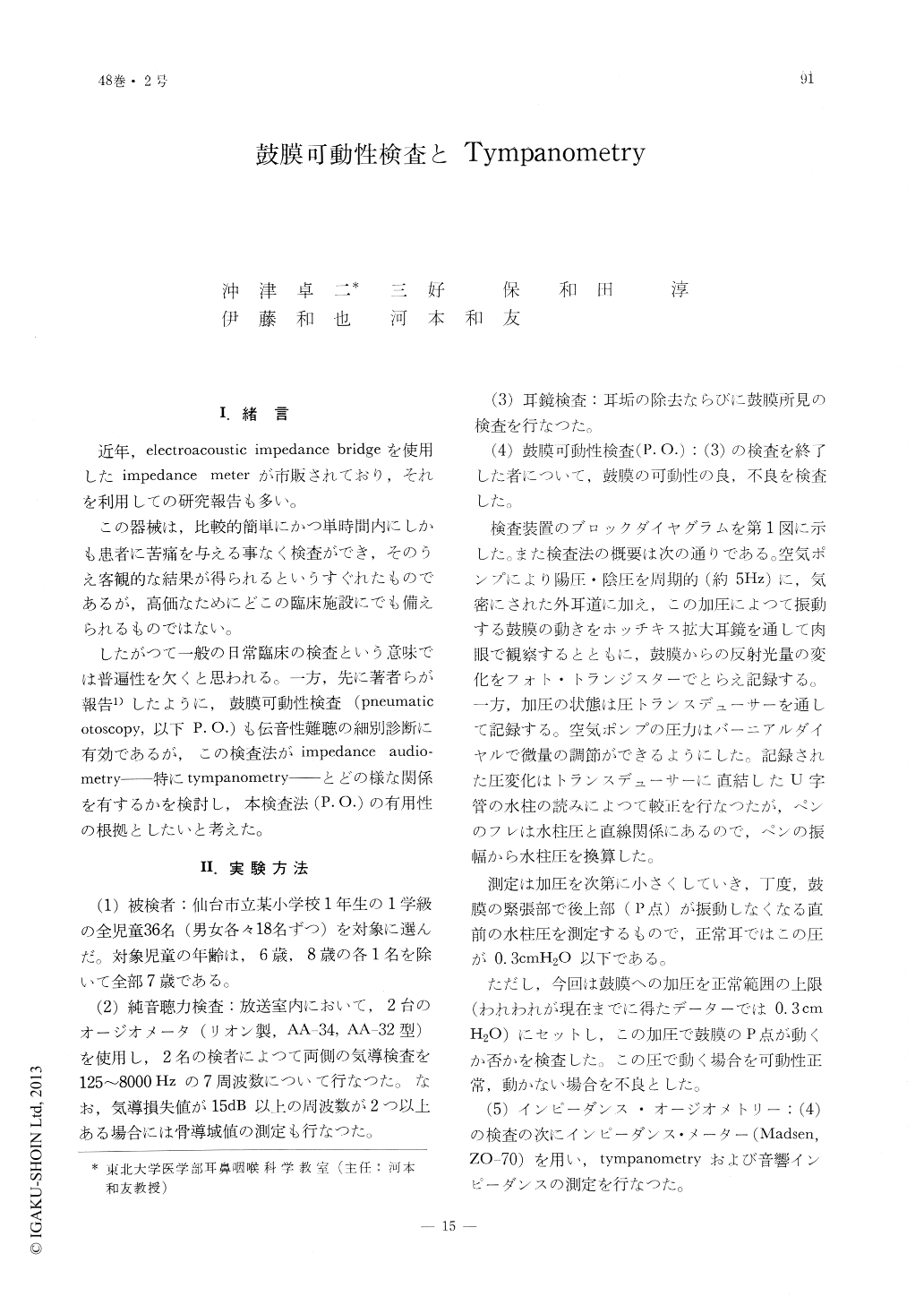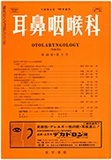Japanese
English
- 有料閲覧
- Abstract 文献概要
- 1ページ目 Look Inside
I.緒言
近年,electroacoustic impedance bridgeを使用したimpedance meterが市販されており,それを利用しての研究報告も多い。
この器械は,比較的簡単にかつ単時間内にしかも患者に苦痛を与える事なく検査ができ,そのうえ客観的な結果が得られるというすぐれたものであるが,高価なためにどこの臨床施設にでも備えられるものではない。
Recently, in the diagnosis of auditory disorders the impedance audiometry has been increasingly employed. But the instrument for impedance measurement is so expensive that it cannot be provided in all otologic clinics. On the other hand, pneumatic otoscopy has been employed from early periods. The latter, however, has some weak points, namely, the mobility of the tympanic membrane cannot be measured objectively and quantitatively. For this purpose, the authors devised a new apparatus, the pneumatic otoscopy which employs optical and manometric methods. The movements of the tympanic membrane are induced within the sealed canal by altering the static pressure by means of an air pump. These movements are recorded by means of a photo-transister which detects the change of volume of reflected light from the membrane due to its movements.
Gradually this pressure is decreased, which is changeable quantitatively, until when the point where almost total movement of the membrane had stopped has been reached.
In this method the movements of the tympanic membrane arc represented the formula, cmH2O.
The reliability of the pneumatic otoscopy is studied by comparing the results obtained by this instrument with those of tympanometry. Ninety one percent of the ears determined as having a normal movement of the tympanic membrane by pneumatic otoscopy were shown to be type A by tympanometry, and 95% of ears determined as having a poorer than that of the normal were shown to be type B or C. However, it was difficult to differentiate the types B and C by using pneumatic otoscopy.

Copyright © 1976, Igaku-Shoin Ltd. All rights reserved.


